The 2017 update of the National Electric Code is officially in effect in 30 states, while most other states are in the process of adopting the new rules. Complying with the 2017 NEC requires solar installations on all buildings to have the capability of module-level rapid shutdown in case of emergency.
This rule pertains to any building-mounted PV but excludes solar carports, which are considered shelters but not buildings, said Matthew Paiss, technical advisor for battery materials and systems at Pacific Northwest National Laboratory (PNNL) and former electrical safety trainer and first responder.
There are three ways to satisfy the 2017 NEC, according to Ken Boyce, principal engineer director of energy and power technologies at UL:
1. Install a “listed” or field-labeled rapid shutdown system
The term “listed” comes from the original name of UL’s certification program developed a century ago. The National Electric Code uses the word “listed” but does not specifically say products and systems must be certified through UL — it instead talks about the overarching characteristics of organizations that would perform that certification service. Obviously, Boyce said UL thinks manufacturers should certify their products for rapid shutdown through UL, but other nationally recognized testing labs could work too.
“We’ve been extremely active in the development of these requirements with the industry and with other stakeholders like the first responder community to try to bring that level of confidence for first responders that have to interact with these systems as they carry out their critically important duties to protect society and people and property, and we want to make them as safe as possible,” Boyce said.
At Solar Power International 2019, many inverter and rapid shutdown device manufacturers displayed their SunSpec certifications. SunSpec developed important protocols for communication among different equipment in the rapid shutdown process but is not a listing body like UL. Seeing the SunSpec label alone does not tell installers a product is NEC 2017 certified for rapid shutdown.
The other part of the first compliance option, field-labeling, refers to a limited engineering evaluation that occurs after installation at a specific site. If the installation complies with NEC 2017 requirements, it can be field-labeled as a rapid shutdown system if the AHJ permits that.
2. Install a system capable of lowering its voltage to 80 V within 30 seconds
Microinverters are typically seen as inherently compliant with rapid shutdown because they convert high-voltage DC power to lower-voltage, safer AC power that can drop down to 80 V within 30 seconds. However, the 2017 NEC does not specifically talk about microinverters as a way to satisfy the rapid shutdown requirement, according to Boyce.
He said some microinverter designs have capacitators on the front end of the circuitry, so unless an inspector actually performs a voltage measurement, there’s no way to know it’s below the 80-V limit. UL has proactively performed these tests to verify that certain microinverters can meet the 80-V threshold, but testing after the inverters have been installed is a challenge.
3. Install a BIPV system with no metal components, no exposed conductors and not within 8 ft of grounded metal
Solar shingles, tiles or other building integrated PV (BIPV) systems can meet NEC 2017 requirements if they include no metal components or exposed conductors or they are not near any grounded metal. These systems are segregated from grounded and conductive parts.
The future of PV Hazard Control systems
There is a revised first option currently being finalized for the 2020 NEC that Boyce said will likely be the future of rapid shutdown requirements: Build an array that’s listed as a PV Hazard Control system, per UL 3741.
“There was some discussion around how rapid is rapid? What’s actually shut down? It’s not entirely shut down, so this term ‘PV Hazard Control’ emerged as maybe a clearer way to talk about what’s actually being accomplished in terms of providing that protection,” Boyce said.
Boyce said installing a PV Hazard Control system could be an acceptable way to satisfy NEC 2017 even before the 2020 version is formally adopted in a given jurisdiction, but it depends on the AHJ inspecting the system.
Currently, string inverters require “listed” add-ons to be rapid-shutdown compliant. A rapid shutdown transmitter or initiator is installed into the inverter either during manufacturing (like Fronius’s offering) or aftermarket. That transmitter is paired with a sensor that’s attached to the array. If the rapid shutdown switch or breaker is initiated at the inverter by a first responder, like in the case of a fire, the transmitter contacts the sensor at the array and stops the flow of energy.
With the future PV Hazard Control requirement, the rapid shutdown functionality will be integrated comprehensively in the solar system, rather than the current standard that allows different rapid shutdown-certified pieces and parts to be used.
“It is clearer in the 2020 NEC that to comply with the requirements, you need a PV Hazard Control System that’s listed for that purpose,” Boyce said. “So that means specifically designed and evaluated and tested and certified for the purpose of producing PV Hazard Control.”
Tigo Energy was founded in 2007 and is a pioneer of rapid shutdown. The company is also a leader in prioritizing system-level certification — Tigo rapid shutdown devices are UL-certified to work as a system with most major inverter manufacturers including SMA, Yaskawa Solectria, Ginlong Solis, ABB and Sungrow.
Even before UL’s 3741 standard becomes a requirement in 2020 and beyond, Tiffany Douglass, director of marketing for Tigo, encourages installers to only buy system-certified RSDs like Tigo’s.
If devices are using power-line communications to initiate rapid shutdown and do not have a “system” UL certification, the RSDs could suffer from false detection of arcs or no detection of actual arcs, which could result in a safety and fire risk, according to Douglass.
Why rapid shutdown is a necessary function
PNNL’s Paiss recently retired from his post as captain for the San Jose Fire Department after 23 years. He never dealt with a structure fire involving solar PV during his tenure, but he knows the importance of protecting first responders and homes as solar becomes more common — and systems installed in the past show signs of aging. These issues were front of mind when he worked on developing rapid shutdown requirements in the NEC.
“Our concern was multi-pronged. It wasn’t just the safety of the responders. When you reduce the voltage, you reduce the energy available to start fires. You don’t eliminate it, but you reduce it. So, we were concerned about the number of fires being started by faulty wire management, arc faults not being detected, and as these systems age and installation breaks down, there’s going to be a higher likelihood of additional faults,” Paiss said. “If the system had rapid shutdown [ability], if there was a fault that is detected, one of the requirements of the NEC is that it initiate and put itself into a safe state.”
How installers can build code-compliant systems
Paiss said it’s unlikely that inspectors will test to make sure rapid shutdown systems work. It’s easy for them to flip the switch or breaker to initiate rapid shutdown, but in order to check and see if the array is reduced to 80 V or less within 30 seconds, inspectors would have to get on the roof and put voltmeters into connectors to test it.
Boyce said this difficulty is why the 2020 NEC is moving toward the system-level rapid shutdown certification requirement. When UL 3741 goes into effect, an official sticker showing the system certification will be enough for the AHJ to know this system is up to code.
“I think we can drive more to having a system that was specifically designed and developed to accomplish this protective function,” Boyce said. “It was tested through this rigorous program and certified for that specific protective feature, and then make it as simple as looking for the UL certification mark.”
For now, Paiss said the important thing for contractors to do is provide the AHJ with the spec sheets stating the products are listed to UL 1741. Some manufacturers take artistic license on marketing new products that may not necessarily be officially listed, and AHJs should catch on to that easily, he said.
“If they provide them a cut sheet that says ‘tested to rapid shutdown’ but not actually saying it’s ‘listed,’ any AHJ worth their salt is going to bounce that right back to them and say, ‘This is not listed,'” Paiss said.
To be most confident of successful AHJ inspection, contractors should look for UL certification of the system. Contractors should also make sure they understand the requirements for the specific AHJ in the location where they’re installing.
“Understanding the requirements that are in place when the installation is being done in that particular jurisdiction is really a good starting point for making sure that you’ll be successful in having that installation approved by the regulatory authority in providing the highest level of safety,” Boyce said.
Updated on Jan. 14


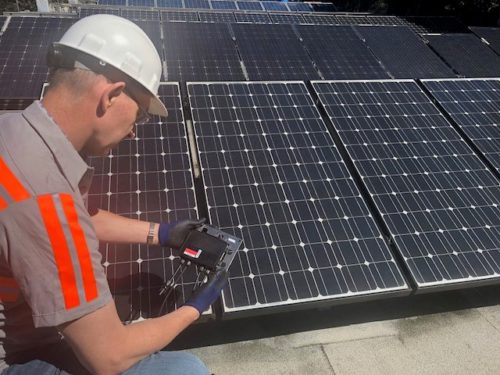
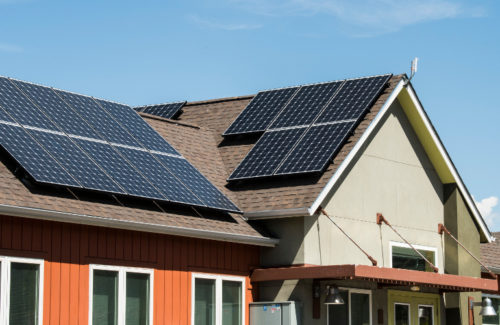
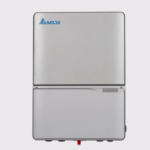
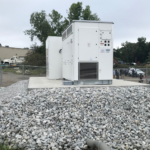


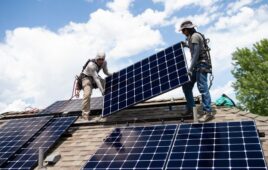


Would using separately powered Normally open held closed contactors for each DC string closely located to the panels on a roof mounted system that open up upon loss of grid power or initiation of a Rapid shutdown be acceptable to satisfy NEC 690?
Yes, it should be acceptable. I’ve done exactly that on a system (with the contactors inside the attic), and my particular AHJ was fine with it.
However, I suspect that future code versions could close this window of opportunity.
I don’t see how using contactors would comply. Doesn’t the rapid shut down device system have to cut power to the PV array in the event of a short anywhere in the PV system? You mentioned you were triggering them with grid power correct?
Hi Jeff, Thanks for the super helpful explanation above. Another RSD option is SolarEdge’s solution that commercially uses a 2:1 optimizer with a simplified and inexpensive inverter (that’s only one optimizer per pair of modules). With a 25 year warranty, and because optimizers are roughly 70% of the system coast, you can also get significant added energy production, for a comparable, or often lower price, than a other technology. We provide the added energy production by controlling each pair of modules with a buck/boost feature resulting in a fixed string voltage of only 850 volts, and eliminating the module mismatch of older technologies that lose power as every module in a series string tracks to the lowest producing module, and ages at increasingly different rates. And hey, we also have a free design tool, free 25 year monitoring and module level data that updates every 5 minutes. SolarEdge’s technology has been the safest, with optimizers that shut down to one volt safe DC as soon as they lose a signal from the inverter or detect an fault. Asset managers and O&M folks also love being able to see the health and performance of their modules, and track installation & module issues with ease… right from their comfy office chair.
Hi,
I just want to clarify on the rapid shutdown. The law states that voltage must be less than 80V within 30S. What should be the specific voltage as a basis. If the module’s open circuit voltage or module’s operating voltage?
Thanks,
Que
The SolarEdge P860 optimizer, paired with any of their 3 phase inverters, meets NEC 2017 code, always. It also produces more energy because it eliminated module mismatch for the life of the system. Because string lengths are much longer, BOS is decreased. It’s the safest, most cost effective solution, from a public, profitable, bankable company. How is that SolarEdge isn’t mentioned in a NEC 2017 code article?
There are many MLPEs that fit rapid shutdown requirements. We did not provide an entire list.
How far & wide is this safety shutdown procedure being adopted like World Wide. I’m in Australia and this has not come to my attention in study training classes. As an Electrician for 46 years, I’m interested to know that the suppression of the energy level has become a distinct liability to the 1st responder tribe.
This is only in the United States
That’s interesting. Makes one wonder if rapid shutdown requirements might be a solution to a fictitious problem–a clever political attempt by entrenched energy interests to impede a rapidly-growing solar industry in the noble name of protecting first responders.
Indeed.
Is there a high likelihood that fire-fighters will have to climb on your (burning) roof?
No.
Is there any requirement to shut down power to <80V for the rest of the house?
No.
Is the danger of unintentionally grabbing hold of any particular combination of hazardous leads from the solar panels high?
No.
Is the regulation retro-active?
No.
Will fire-fighters encounter solar installations that do NOT have this feature?
Yes.
So don't fire-fighters have to assume there's no shut down?
Yes.
Won't firefighters treat the array as if it is energized anyway?
Yes.
Conclusion: This is either the nanny state legislating in an area where it really doesn't have a damned clue (sort of like Kalifornia's bid to convert to electric vehicles, even as their electric grid cannot even sustain customers WITHOUT the additional drain of EVs), or it's an attempt to drive up the cost of solar energy. Or both.
Kelsey, great article!
I would strongly suggest taking a look at DCSunVolt.com for all of your NEC compliance needs. All UL listed products with quick turnaround times. 1500V capacity with tons of customizable options. Industry wide compatibility while meeting top quality standards.
DCsunvolt.com
Thus far, many systems are probably not compliant because project developers, in their drive to minimize costs, found ways around “the requirement”. Therefore, the hazard exists and compliance should be something that they should have to address regardless of when the systems were installed. How about that, fast money?
You don’t mention that ground mount does not require rapid shutdown.
We did say that “this rule pertains to any building-mounted PV.”
If the ground mount solar system has the inverter inside the residence, does NEC 17 require the system to have RSD?
No, I don’t believe so. The point of a rapid shutdown device is to cut electricity to the solar panels, in case the panels are in a dangerous situation.
Kelsey,
After reading this article, it felt like a point of clarification would be helpful regarding the “System” vs “Equipment” certifications of devices used for “Rapid Shut Down” (RSD).
First, I would like to thank you for helping raise awareness of the 2017 NEC article 690.12 requirement for module level rapid shutdown. I volunteer for the California Solar and Storage Association as Codes/Standards Committee chair. Recently, I have fielded many questions from CALSSA members trying to understand the new module level rapid shutdown requirements that took effect January 1, 2020. This new code requirement is of particular interest to commercial rooftop PV system installers that previously avoided module level rapid shutdown due to the added cost and complexity.
There are two different certifications for rapid shut down of rooftop PV installations: 1) UL 1741 PV Rapid Shutdown System (PVRSS) for “Systems” and 2) UL 1741 PV Rapid Shutdown Equipment (PVRSE) listing for “Equipment”. NEC 690.12(D) states that “Equipment that performs the rapid shut down functions, other than initiation devices such as listed disconnect switches, circuit breakers, or control switches, shall be listed for providing rapid shut down protection.” Both listings are sufficient to comply with code, but which one your device is listed to depends on the manner of operation.
1) UL 1741 PV Rapid Shutdown System (PVRSS) listing
This listing pertains to RSD devices used with inverters that are evaluated “AS A SYSTEM”. This type of listing is required whenever the RSD device uses “power-line communications” to detect a shutdown command. There have been problems with some of these systems where arc fault detection has interfered with the transmission and actuation of the shutdown signal due to electrical noise on the power line. These problems are being addressed by several inverter manufacturers, and newer firmware for RSDs and inverters have been introduced to fix these problems. As a result, it is highly advisable that any RSD that operates from power-line communications be listed as an approved option for the chosen inverter to prevent these known problems from causing the RSD to not operate properly.
2) UL 1741 PV Rapid Shutdown Equipment (PVRSE) listing
Some RSD solutions only require a PVRSE listing. This includes RSD devices that DO NOT use “power-line communications” to instruct the RSD to turn off. One example is the Fire Raptor from IMO which uses a powered 24 V DC electrical circuit connected to each and every RSD device attached to a module. Whenever the 24 V circuit loses power, like when you initiate the shutdown button, the power to the RSD devices is cut and that switches each module off. This is a simple and reliable approach that is immune to power line noise problems and works with virtually any inverter. There is no need for a PVRSS “System” listing for this type of RSD solution. The PVRSE “Equipment” listing is all that is needed to meet code requirements. The only negatives to a powered circuit RSD solution is you have to run a couple extra wires (small gauge) to power the 24 V circuit, and this 24 volt circuit consumes 5-10 watts of power. Minor problems, but worth mentioning.
So to summarize, PVRSS certification for “Systems” is needed when using RSD devices that use power-line communications. RSD devices that use a powered circuits like the IMO Fire Raptor, DO NOT need a PVRSS “Systems” certification and are able to be used for code compliance if they have a PVRSE “Equipment” listing.
Thanks again for helping raise awareness of the options, particularly for commercial rooftop PV installers that are now being unhappily thrust into the reality of module level rapid shutdown via 2017 NEC 690.12.
Sincerely,
Jeff Spies